Bathroom paint: how to choose the best option for wall decoration
From this article, you can find out what features bathroom paint has: classification and overview of the main types of compositions intended for rooms with high humidity levels, their advantages and disadvantages. The text contains recommendations that will help determine the choice of finishing material with optimal characteristics.
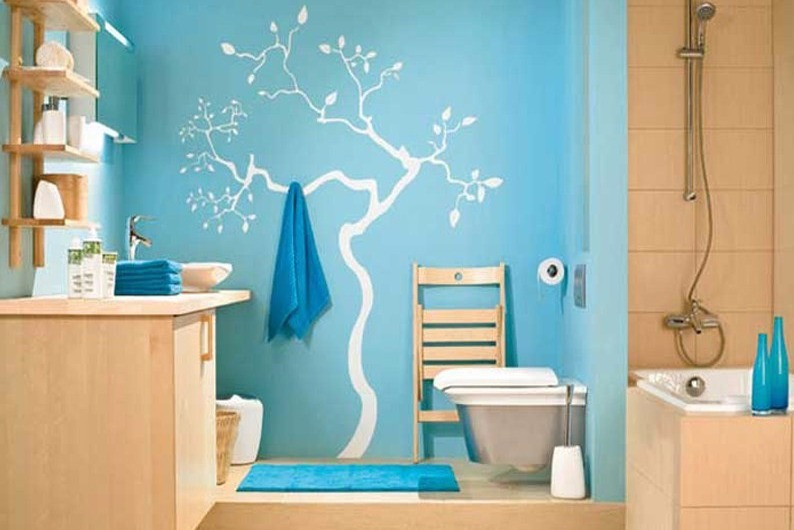
How to paint the walls in the bathroom: choose the finishing material
Bathroom renovation is an expensive and complex process that requires careful selection of materials. The room must be clean and resistant to moisture. The presence of mold is unacceptable, so special requirements are put forward for wall decoration. The most inexpensive coating is a dye. This material is not only economical and easy to apply. Coloring compositions allow you to achieve unique interior solutions due to rich and juicy colors, which are obtained by adding pigments to the mixture.
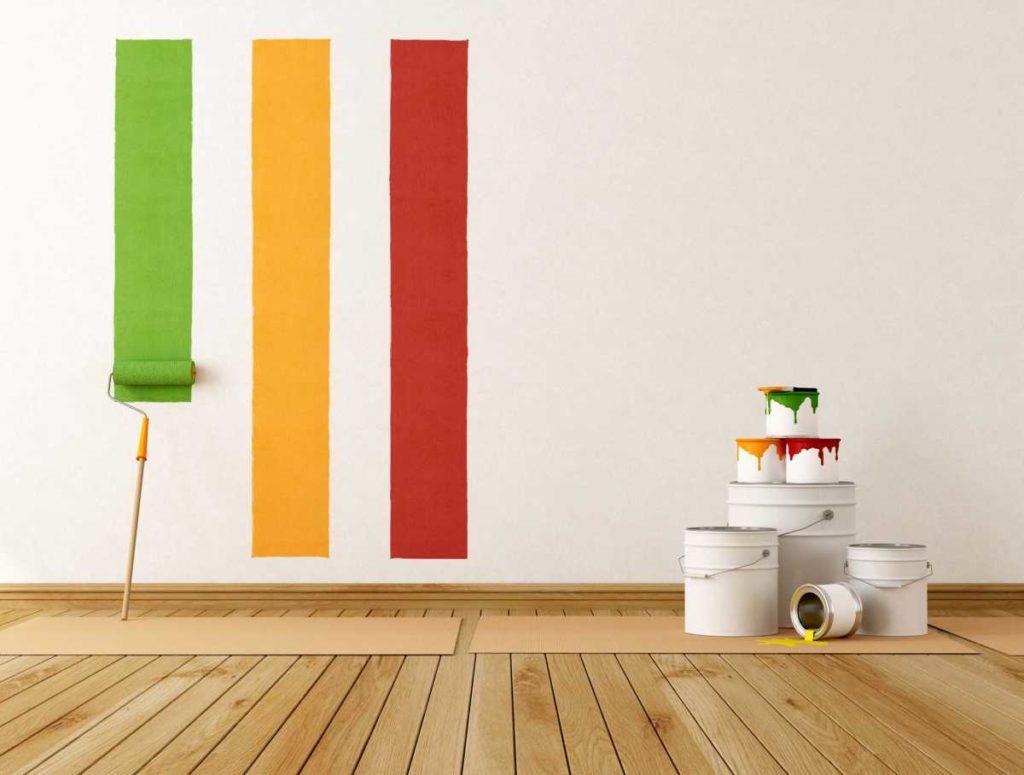
Please note! The dye is not used in areas that come into contact with water, such as the area around the sink and bath. It is desirable to finish these places with ceramic tiles or cover them with glass panels.
To decide what to paint the walls in the bathroom, it is advisable to familiarize yourself with the existing range of compositions, weigh all the disadvantages and advantages of each type, and determine which of the options is suitable for creating the necessary artistic effect.
The following types of wall paints are used as finishing materials:
- water-based emulsions;
- latex;
- acrylic;
- silicone;
- chlorinated rubber;
- alkyd;
- oil.
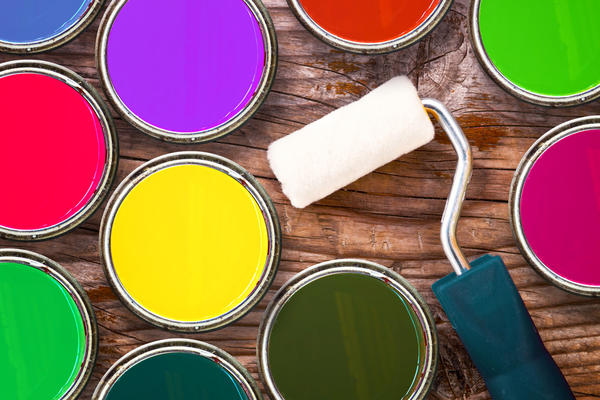
The most important properties of dyes that are used for wall decoration in the bathroom are water resistance and protection from microorganisms, such as fungi and mold.
Are water-based paints suitable for bathroom walls
Water-based emulsion compositions are widely used for wall decoration. These dyes have a number of advantages:
- relatively low price;
- no unpleasant smell;
- simple application process;
- environmental and safety;
- the coating dries quickly;
- when exposed to sunlight, the surface retains its color well.
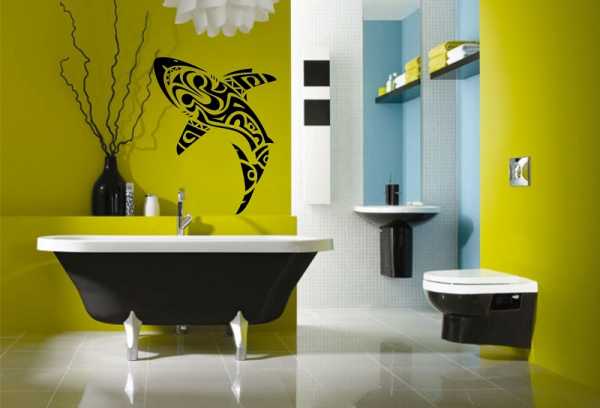
In the photo, painting the walls with decorative water-emulsion compositions looks very attractive. Thanks to the optimal viscosity, a beautiful effect is obtained, so designers have wide opportunities in choosing a coating for walls. Using different tools can be applied to the surface of the original drawings. Water-based paints have an extensive color palette. Adding special pigments to the composition, you can get any shade that will fit perfectly into the conceived interior design of the bathroom.
Water-based dyes are used to create matte and glossy surfaces. When choosing a material, it is very important to take into account the type of base, its structure, and use a suitable primer composition. The advantage of these dyes is that any dirt can be easily removed from the surface by wiping the wall with a damp cloth or sponge dipped in a soap solution. After that, this area is painted again.
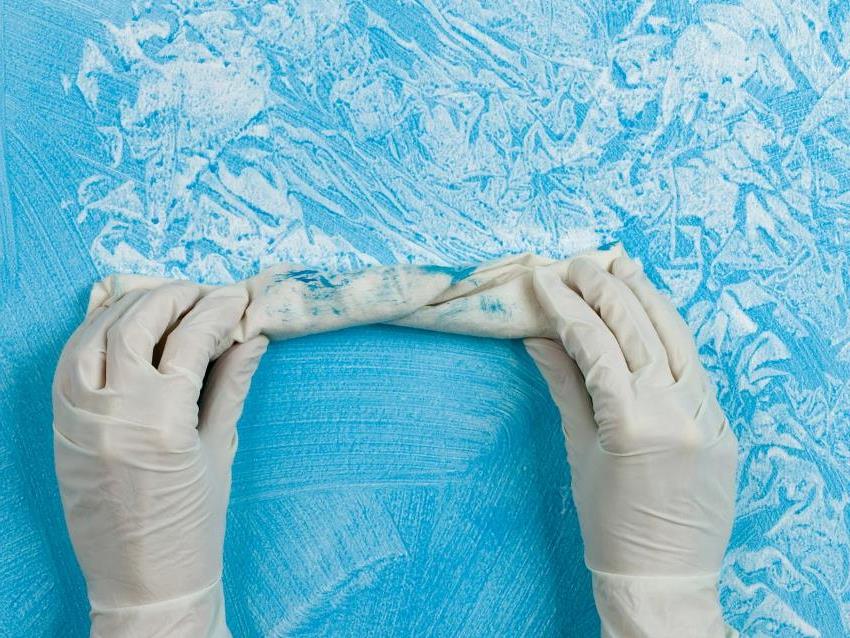
Important! It is not recommended to use water-based dyes on areas in contact with water. If this can not be avoided, you should select a coating with a glossy surface. They are more resistant to mechanical damage.
Latex-based bathroom paint: advantages and disadvantages
As part of latex dyes, there are no antifungal additives, so before painting the walls in the bathroom, they need to be treated with a special primer with antiseptic properties.
Advantages of latex-based dyes:
- elastic surface that masks minor wall defects: cracks, chips;
- durable coating;
- resistance to mechanical loads;
- excellent decorative properties;
- no unpleasant odors;
- the dye creates a thin film on the surface that protects the walls from contamination;
- universality;
- the maximum drying time is 2 hours.
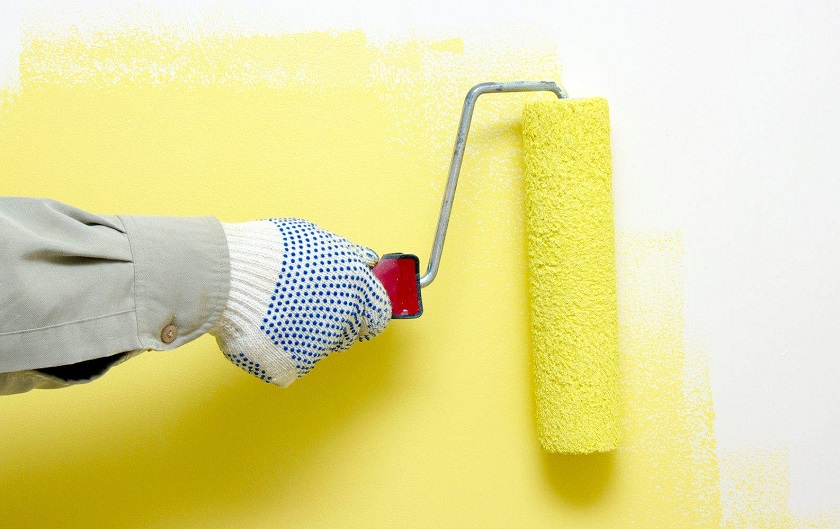
The latex surface does not tolerate the effects of low temperatures. As a result of their influence, the coating cracks. Latex dyes also react negatively to sunlight, which causes the coating surface to fade and lose its brightness. The price of these compositions is much higher than that of water-based emulsions, so finishing works in the bathroom will cost more.
Advantageous characteristics of acrylic paint for the bathroom
Experts consider acrylic compositions the best option for painting walls in the bathroom. This type of dye refers to finishing materials on a water-dispersed basis.
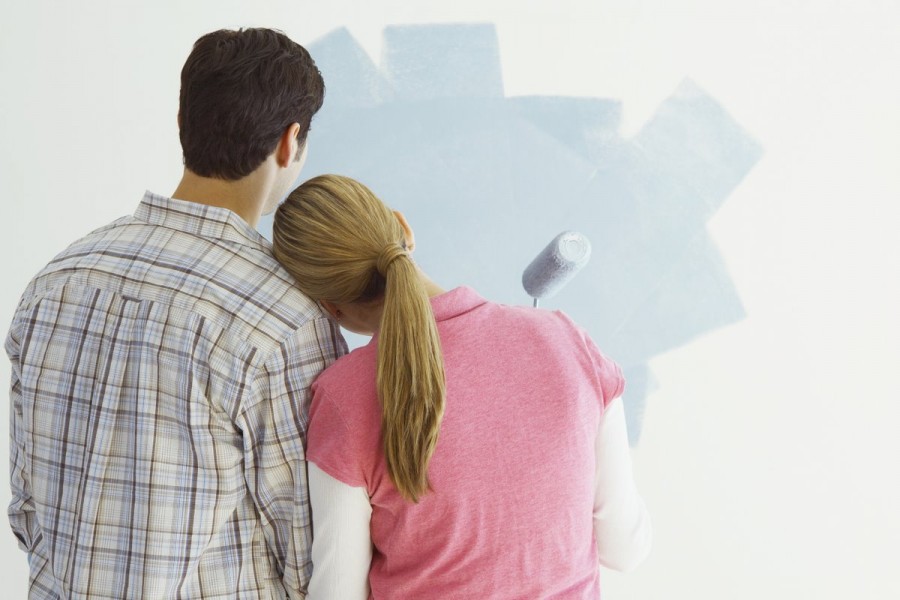
Why it is profitable to buy acrylic paint for the bathroom:
- large palette of colors and shades;
- resistance to contamination;
- simple application process;
- the presence of a light, but not sharp smell that does not cause unpleasant sensations during wall painting;
- dirt is easily removed from the surface;
- wiping the walls with a damp cloth and soap solution does not damage the coating;
- the dye contains antifungal additives that prevent the development of mold;
- the compositions are positioned as water-resistant paints for the bathroom, so they can be used for finishing areas that are constantly in contact with moisture;
- no wall preparation is required before painting;
- due to the optimal viscosity, the dye hides small errors on the surface.
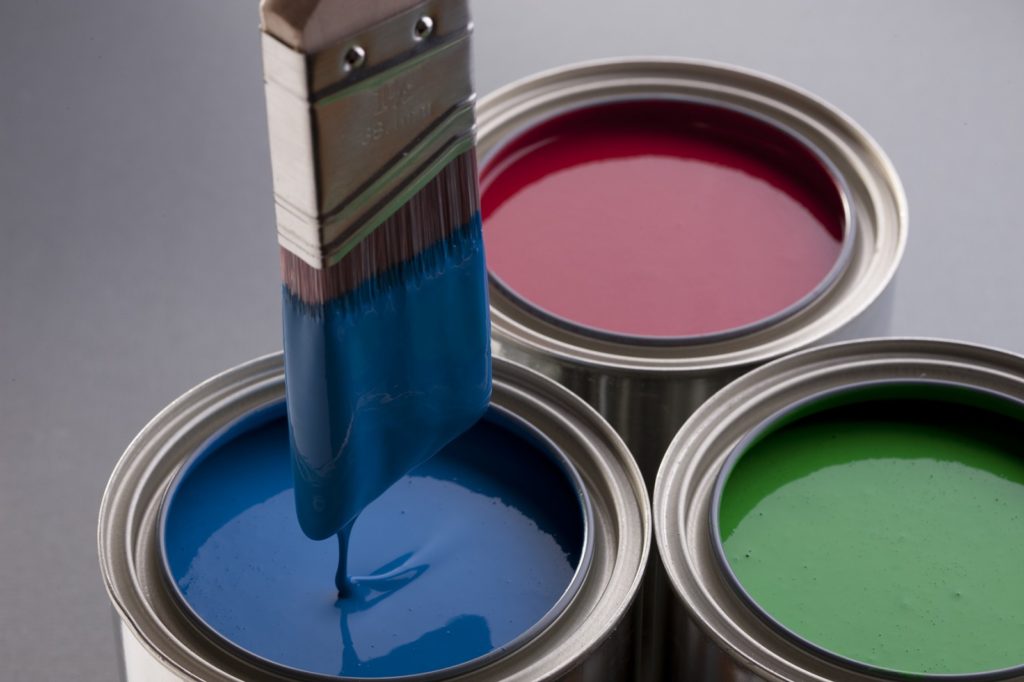
Useful advice! Choosing a dye, it is desirable to focus on the products of leading manufacturers. They are quite expensive, but they can create a high-quality and durable coating on the walls.
Pros and cons of using silicone paint for bathroom walls
When thinking about what paint to paint the walls in the bathroom, you should pay attention to the compositions that have a silicone and silicate base. This category of finishing materials is widely popular in the market due to its unique physical properties.
Advantages of silicone dyes:
- the coating does not pass water at all;
- high resistance to contamination;
- the composition forms a coating on the surface of the walls with vapor-proof properties;
- the dye can cover significant wall errors, such as potholes and deep cracks.
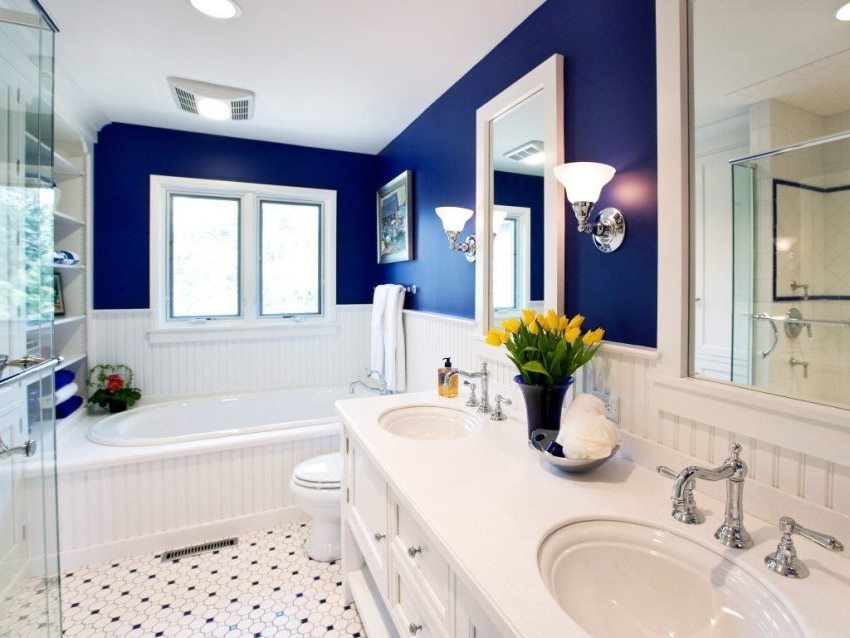
Silicone compounds belong to the category of water-resistant bathroom paints. Water-based options are better than others, suitable for rooms with a high level of humidity, but their cost is very high, which is the main drawback.
It is not recommended to use PVA-based silicone water-based emulsion dye for wall decoration in the bathroom. This composition is intended for rooms with a dry microclimate. It can only be used as a ceiling covering in the bathroom.

Characteristics of chlorine-rubber water-resistant bathroom paint
The most reliable and practical coating option is bleach – rubber paint. This composition can be a great replacement for mosaic or ceramic tiles. This type of coating does not need frequent updating and retains an attractive appearance for a long time.

Advantages of painting the walls in the bathroom with chlorine rubber paint:
- moisture resistance;
- the coating can withstand constant contact with water;
- not afraid of direct exposure to sunlight;
- does not fade under the influence of ultraviolet light;
- if the correct composition is chosen, the dye can be used for wall decoration in the bathroom;
- it contains no harmful or toxic substances.
It requires careful preparation of the walls in the bathroom for painting with a chlorine-rubber composition. This type of coating is used on cement and metal surfaces. Moreover, this does not require prior application of putty and primer, but you will have to completely get rid of the old coating.
Finishing the walls with chlorine-rubber paint can result in a significant amount. To get a high-quality coating, you must apply at least 3 layers to the surface. You will not be able to use conventional solvents. In this case, special formulations are used. However, the result and favorable characteristics fully justify the cost of purchasing the material.
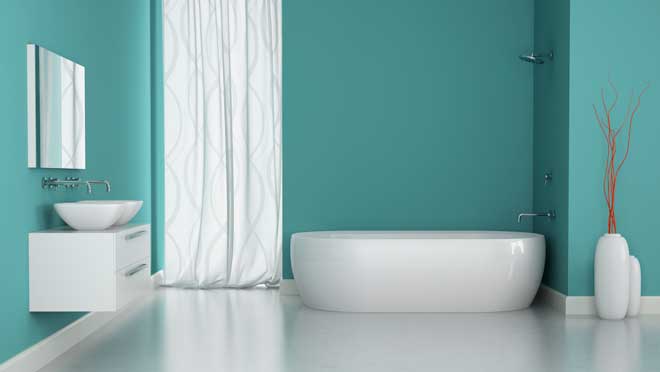
Please note! Despite the absence of toxic and harmful substances in the composition, it is forbidden to use chlorine-rubber paint as a coating for containers where drinking water is poured.
Features of painting the bathroom with alkyd enamel
All alkyd enamels are suitable for finishing walls in the bathroom. Due to the tension of the film-this coating perfectly repels water, so you can not be afraid to do wet cleaning of the walls.
Why it is profitable to buy enamel for the bathroom:
- under the influence of sunlight the color of the coating does not fade;
- excellent protection of metal from rust;
- durability of the coating;
- fast drying;
- the transparency of the layer well hides errors on the walls.
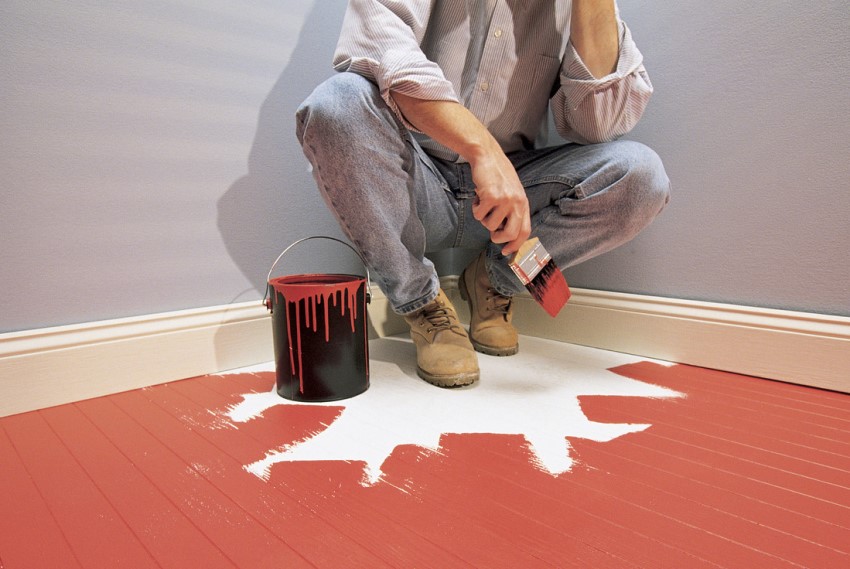
Alkyd enamels also have disadvantages. First, these compounds are characterized by an unpleasant and pungent smell. Secondly, before applying the dye, the wall surface needs careful preparation. To prevent shedding, the base should be covered with a primer. High-quality coating can be obtained only if several layers of alkyd enamel are applied.
Peculiarities of use of oil-based paints for walls
Oil-based paints are considered the most affordable and budget option for finishing. However, this category of materials has more disadvantages than advantages.
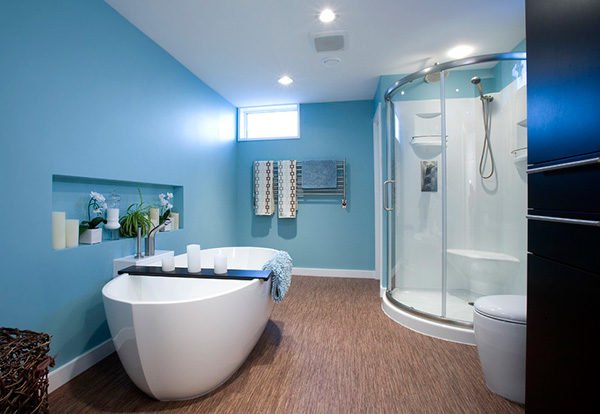
Disadvantages of oil dyes:
- sharp smell during application;
- the coating takes a long time to dry;
- paint is difficult to remove from the wall if you need to update the repair in the room.
Oil-based paint creates a vapor-proof film on the surface, which is a significant drawback, especially when it comes to the bathroom. In rooms with high humidity levels, the walls must “breathe”. Otherwise, perspiration will accumulate on their surface, which is a favorable environment for bacteria to reproduce.
Tightness of the oil film is useful for finishing floors in the bathroom. For walls, this type of dye is not suitable at all, because over time the coating cracks and crumbles.
How to choose wall paint to create an interesting interior in the bathroom
Having decided which paint is best for the bathroom walls, you should think about the color of the future interior. The choice of shade depends not only on personal preferences, but also on other factors:
- the style of the room;
- size room;
- amount of light;
- structural features of the room, for example, disadvantages or advantages that need to be hidden or emphasized.
Useful advice! To achieve a harmonious combination when painting the walls, it is desirable to take into account the color of plumbing.
Can I use decorative plaster for the bathroom
Decorative plaster can be used for decoration of walls in the bathroom along with painting compositions. These materials are perfectly combined with each other, creating spectacular combinations.
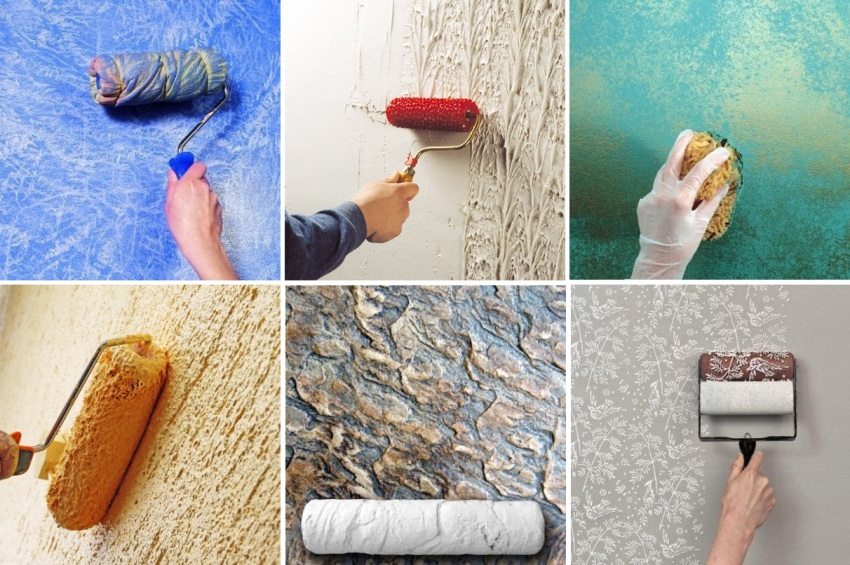
Most often, silicate water-resistant plaster for the bathroom is used as a finish. This type of material forms a strong coating on the wall. Its service life is more than 50 years. Plaster based on silicates does not pass moisture at all. In this case, the coating does not interfere with the natural ventilation of the room. Silicate plaster is antiseptic and fireproof, so it can be used in areas with high humidity levels.
Mineral plasters are also used for finishing bathrooms. The coating has a vapor permeability, so that the room retains a comfortable microclimate. The service life of this material is about 30 years.
Moisture-resistant properties are also inherent in acrylic plaster. It is plastic and easy to use. This type of coating will last at least 50 years.
Hi! your article is really helpful for me. your guidance is really helpful for me, if you want to know more about the ideas for selection of paints colors for walls then you visit a website for more information.
I seriously love your website.. Excellent colors & theme. Did you make this web site yourself? Please reply back as I’m attempting to create my own website and would love to learn where you got this from or what the theme is named. Many thanks!
WOW. So pleasant
Way cool! Some very valid points! I appreciate you penning this post plus the rest of the website is also very good.
Thank you
I loved your blog.Really looking forward to read more. Cool.
Thank you